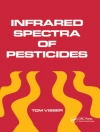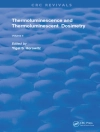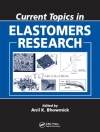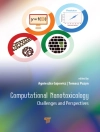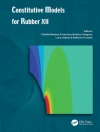An important guide to assessing and managing the environment
from a landscape perspective
Ecological relationships are nested within the landscape.
Identifying the relevant spatial and temporal scales is critical
for an effective understanding of ecological functions that human
societies depend upon. Moreover, human encroachment into natural
areas, or changes in climate, can alter spatial relationships,
which in turn can negatively affect vital plant and wildlife
patterns–and weaken economic structures needed to sustain
human societies. This book is the first to combine multiple
disciplines into one cohesive strategy to study these crucial
connections, and looks toward building a social paradigm that
embraces the dynamics of ecological systems. This book:
* Integrates landscape ecology, environmental risk assessment,
valuation of ecological goods and services, and environmental
management decision processes into one single source
* Includes chapters on quantitative measures, Bayesian
modeling, ¿economic analysis, and sustainable landscapes
* Covers marine, forest, agricultural, and pharmaceutical risk
assessment
* Has a chapter on predicting climate change risk to
ecosystems
* Has a companion ftp site with color graphics, animations, and
risk assessment tools
With material that is accessible across all knowledge levels,
Environmental Risk Assessment and Management from a Landscape
Perspective moves beyond looking solely at chemical
contaminants to diagnose environmental threats, and aims to
accomplish practical risk assessment in a manner that supports
long-term sustainable management.
Mục lục
Preface.
Prologue.
Table of Contents.
Chapter 01. Introduction (Lawrence A. Kapustka and Wayne G.
Landis).
Chapter 02. Risk Assessment (Lawrence A. Kapustka).
Chapter 03. Population, Habitat, and Ecological Systems
(Lawrence A. Kapustka).
Chapter 04. Relevance of Spatial and Temporal Scales to
Ecological Risk Assessment (Alan R. Johnson and Sandra J
Turner).
Chapter 05. Quantitative Measures and Ecological Hierarchy
(G. Darrel Jenerette and Jianguo Wu).
Chapter 06. Bayesian Models in Assessment and Management
(Jannicke Moe).
Chapter 07. Linking Regional and Local Risk Assessment
(Rosana Moraes and Sverker Molander).
Chapter 08. Integrating Health in Environmental Risk Assessments
(Kenneth L. Froese and Marla Orenstein).
Chapter 09. Valuing Wildlands (Rebecca A. Efromson, Henriette
I. Jager, and William W. Hargrove).
Chapter 10. Predicting Climate Change Risks to Riparian
Ecosystems in Arid Watersheds: The Upper San Pedro as a Case Study
(Hector Galbraith, Mark D. Dixon, Juliet C. Stromberg, and Jeff
T. Price).
Chapter 11. Invasive Species and Environmental Risk Assessment
(Greg Linder and Edward Little).
Chapter 12. Landscape Non-indigenous Species Risk Assessment:
Asian Oyster and Nun Moth Case Studies (Wayne G. Landis, Valerie
C. Chen, Audrey M. Colnar, Laurel Kaminski, Goro Kushima and Ananda
Seebach).
Chapter 13. Ecological Risk Assessment of the Invasive Sargassum
muticum for the Cherry Point Reach, Washington USA (Ananda
Seebach, Audrey M. Colnar and Wayne G. Landis).
Chapter 14. Integrated Laboratory and Field Investigations: Case
Study–Assessing Contaminant Risk to American Badger (Dale
J. Hoff, Deborah A. Goeldner, Michael J. Hooper).
Chapter 15. Environmental Risk Assessment of Pharmaceuticals
(Joanne Parrott, Alison Mclaughlin, David Lapen and Edward
Topp).
Chapter 16. Economic Analysis of Ecological Goods and Services
(Ronald J. Mc Cormick, James Pittman, and Timothy F. H.
Allen).
Chapter 17. Ecosystem Service Valuation Concepts and Methods
(James Pittman and Ronald J. Mc Cormick).
Chapter 18. Metrics and Indices for Sustainable Social –
Ecological Landscapes (Ronald J. Mc Cormick).
Epilogue.
Giới thiệu về tác giả
Lawrence A. Kapustka is Senior Ecologist/Ecotoxicologist for
LK Consultancy. He has published extensively on risk assessment
methods, ecotoxicology, and ecology. He is a member of ASTM
International, Ecological Society of America (ESA), Society of Risk
Analysis, and Society of Environmental Toxicology and Chemistry
(past chair for Ecological Risk Assessment Advisory Group). He
serves on the Science Committee of ESA and editorial boards of
several societies.
Wayne G. Landis is Director and Professor of the
Institute of Environmental Toxicology at Western Washington
University. He has published extensively and is a Fellow of the
Society for Risk Analysis and a member of the Society of
Environmental Toxicology and Chemistry. Dr. Landis is also an area
editor for environmental risk assessment for Risk Analysis and is a
Founding Editor of Integrated Environmental Assessment and
Management. Currently, he is serving on the EPA Science
Advisory Boards for Ecological Processes and Effects and Science
Integration for Decision Making.



